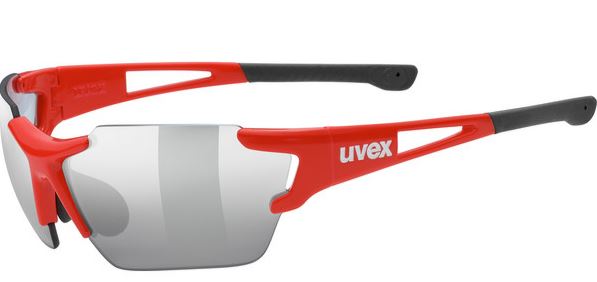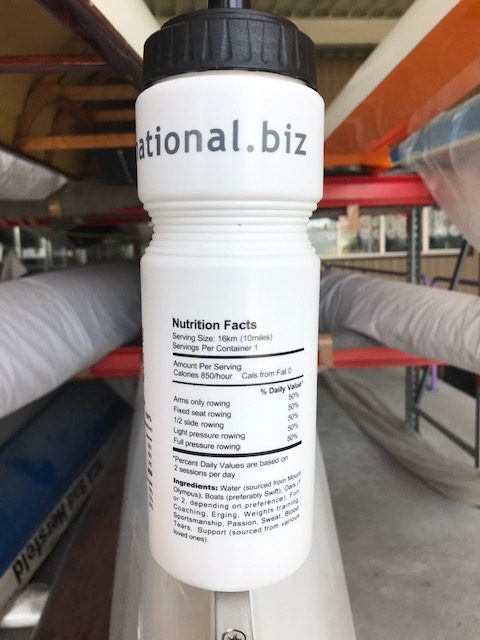Rowing and extreme Heat stress can be serious risks for your health. Temperatures in central Europe are reaching more than 40C presently.
What to do with my rowing excercises?
High intensity exercise in a hot environment, with the associated fluid loss and elevation of body temperature, can lead to dehydration, heat exhaustion and heat stroke. Rowing Australia considers heat stress as a serious health risk. High humidity significantly increases the likelihood of heat stress. Children are at greater risk than adults are because their thermoregulation mechanisms are not fully developed. Older athletes can also be at high risk because of reduced cardiac function. This has impact on your training schedule and maybe even on your regatta schedule.
World Rowing has issued some information about this. According their document “Heat stroke and safety guidelines for FISA, JM Steinacker and FISA Medical Commission 13” , the critical issues are:
 UVEX Sportstyle 803 race – great watersport and racing sunglasses
UVEX Sportstyle 803 race – great watersport and racing sunglasses
- Hydration: The base fluid need of athletes is 2 L/day and increases with exercise time (1L /hour) and air temperatures (1L / per 5 °C temperature increase above 25 °C). Water, hypotonic and isotonic fluids may be used for hydration and rehydration.
- Radiation: Radiation from the sun, buildings or transportation vehicles enhances the negative effects of hot temperatures. Shade provides shelter.
Rowing and heat stress: No hat, No go
- Hats: Athletes in direct sunlight should wear hats which may be wetted with water.
- Clothing: Fabrics that minimize heat storage and enhance sweat evaporation should be used. Light colored, loose fitting clothes made of natural fibres or composite fabrics with high absorption properties that provide for adequate
ventilation are recommended. You might find some ideas in our shop. - Rest: Athletes and officials should be advised that sleep and rest enhance temperature tolerance
- UV sun block: decrease radiation damage of the skin and reflect also radiation. This decreases thermal load.
- Lying down after racing in warm environments may have negative effects on circulation and may provoke collapse. Rowers are advised to cool themselves with water after the races.Please find here some practical information of Information sheet of Sports Medicine Australia – South Branch
Rowing and extreme Heat Stress: Impact of Dehydration
Fluid loss occurs during exercise, mainly due to perspiration and respiration. It makes an athlete more susceptible to fatigue and muscle cramps. Inadequate fluid replacement before, during and after exercise will lead to excessive dehydration and may lead to heat exhaustion and heat stroke.
Heat Exhaustion
Dehydration can lead to heat exhaustion:
- Characterized by a high heart rate, dizziness, headache, loss of endurance/skill/confusion and nausea.
- The skin may still be cool /sweating, but there will be signs of developing vasoconstriction, eg pale colour.
- Athletes will pass little urine, which will be highly concentrated.
- Cramps may be associated with dehydration.
The rectal temperature may be up to 40°C and the athlete may collapse on stopping activity.
Heat Stroke
Severe dehydration may lead to heat stroke.
- Characterized similar to heat exhaustion, but with a dry skin, confusion and collapse.
- Heat stroke may arise in an athlete who has not been identified as suffering tram heat
exhaustion and has persisted in further activity.
This is a potentially fatal condition and must be treated immediately by a medical professional. Heat exhaustion/stroke can still occur even in the presence of good hydration.
Sports Medicine Australia (SA Branch) recommends athletes to drink:
- at least 500mls (2-3 glasses) ½ to 1 hour prior to exercise
- at least 200mls (1 glass) every 10-15 minutes during exercise
and after exercise drink 1.5 times your fluid deficit to ensure you are fully re- hydrated.
How much do I sweat?
Britsh rowing has issued a SWEAT RATE Calculator
- Go to the toilet. Weigh yourself before exercise, wearing minimal clothing.
- At your 60-minute training session consume fluid as normal. Wipe away sweat from skin and hair.
- Weigh yourself after exercise, again wearing minimal clothing. Record how much fluid you consume during exercise.
- Then calculate your (pre-session weight) – (post-session weight) + (fluid consumed) = sweat rat






